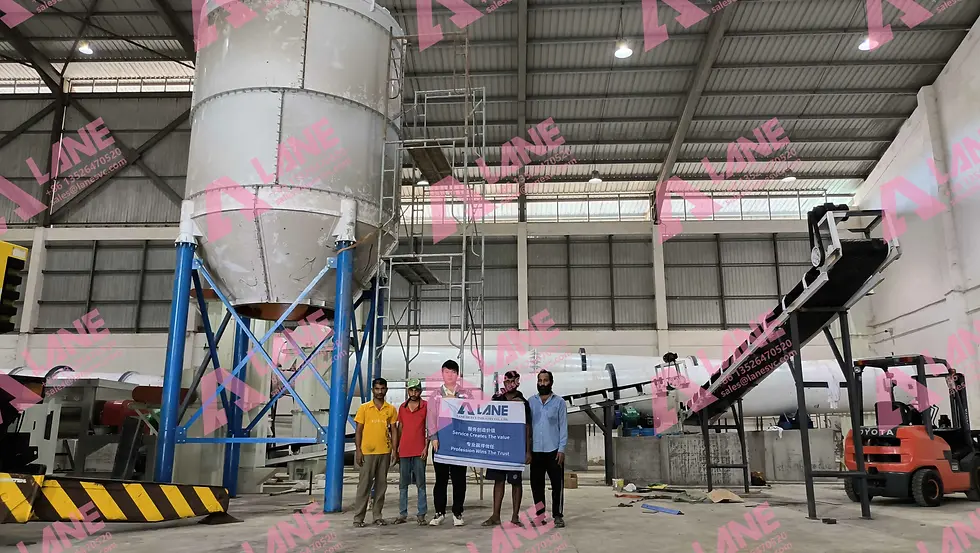Automatic Organic Fertilizer Packaging Line for Modern Fertilizer Production
- Nancy Ju
- Sep 9
- 4 min read
Updated: Sep 10
An automatic organic fertilizer packaging line is an essential part of modern fertilizer production facilities. After raw materials go through composting, granulation, drying, and screening, the final product must be packaged efficiently and reliably. Packaging not only protects the quality of organic fertilizer during storage and transportation but also directly influences market competitiveness.
With increasing demand for eco-friendly fertilizers, producers need packaging solutions that are accurate, efficient, and scalable. An automatic organic fertilizer packaging line integrates weighing, filling, sealing, and palletizing into one streamlined system, reducing labor costs while improving product consistency. It is an important part of the organic fertilizer production line.

Why an Automatic Packaging Line Matters
Efficiency: Handles large volumes of fertilizer continuously, speeding up the entire production line.
Accuracy: Automatic weighing ensures every bag has the correct quantity, reducing customer complaints.
Hygiene: Closed systems reduce dust and contamination during packaging.
Cost Savings: Minimizes labor requirements compared to manual packaging.
Market Appeal: Professional packaging enhances brand value and customer trust.
Process Flow of an Automatic Organic Fertilizer Packaging Line
The automatic organic fertilizer packaging line follows a structured workflow designed to ensure accuracy, efficiency, and quality at every stage:
1. Feeding and Buffering
Granular or powdered organic fertilizer is delivered from storage silos or belt conveyors into a buffering hopper. This step regulates material flow and prevents interruptions in packaging.
2. Automatic Weighing
High-precision electronic scales weigh each portion of fertilizer according to preset parameters, usually ranging from 10–50 kg. Accurate weighing avoids product loss, ensures fairness in trade, and builds customer trust.
3. Bag Filling
The measured fertilizer is directed into open-mouth or valve bags via a filling machine. Advanced systems are equipped with dust-proof mechanisms to keep the working environment clean.
4. Bag Sealing
Once filled, bags are sealed using stitching machines, heat sealers, or ultrasonic sealing systems. Proper sealing is essential for protecting fertilizer from moisture, clumping, or nutrient loss during storage and transport.
5. Coding and Labeling
An automatic coding system prints batch numbers, production dates, barcodes, or QR codes directly onto the bags. This improves product traceability and provides essential information for customers and distributors.
6. Palletizing
Finished bags are moved via conveyors to a robotic palletizer, which stacks them systematically. Neat palletizing makes loading, transportation, and storage more efficient.
7. Wrapping and Dispatch
To protect against dust and moisture during transit, pallets can be wrapped with stretch film. At this stage, the fertilizer is ready for storage or delivery to the market.

Core Equipment in an Automatic Organic Fertilizer Packaging Line
Weighing and Filling Machine – Ensures precise dosing for each bag.
Bagging Machine – Compatible with valve bags and open-mouth bags.
Sealing Machine – Options include heat sealing, sewing, or ultrasonic sealing.
Labeling System – Provides coding, printing, and branding.
Palletizing Robot – Automates stacking for storage and shipping.
Conveyor System – Connects all units, enabling continuous workflow.
Advantages of an Automatic Organic Fertilizer Packaging Line
High Output: Capable of handling dozens of tons per hour.
Flexibility: Adjustable for different bag sizes and packaging formats.
Durability: Built with wear-resistant and dust-proof materials.
Integration: Fits seamlessly into existing fertilizer production lines.
Scalability: Suitable for small plants as well as large industrial operations.
Case Example 1: Medium-Sized Fertilizer Plant in Thailand
A fertilizer plant in Thailand producing 30 tons of granular organic fertilizer per day upgraded its packaging process by installing an automatic organic fertilizer packaging line. Previously, manual packaging slowed production and caused inconsistent weights. After automation, efficiency increased by 40%, labor requirements dropped significantly, and customer satisfaction improved thanks to accurate, professionally sealed bags.
Case Example 2: Large-Scale Operation in Brazil
In Brazil, a large organic fertilizer producer supplying both domestic and export markets adopted a fully automatic organic fertilizer packaging line with robotic palletizing. The system processed 50 kg bags for bulk sales and 25 kg bags for retail. The plant reduced packaging costs by 30% while doubling throughput. Export products also met international packaging standards, boosting competitiveness abroad.

Frequently Asked Questions
Q1: What bag sizes can the packaging line handle?
Typically 10–50 kg bags, but customization for other sizes is available.
Q2: Is it suitable for both granular and powdered fertilizer?
Yes. The system can be adapted for different material flows.
Q3: Can the system be integrated into an existing production line?
Yes. It is designed to connect seamlessly with conveyors, dryers, and storage silos.
Q4: How accurate is the weighing system?
Most machines achieve ±0.2–0.5% accuracy per bag.
Q5: What is the maintenance requirement?
Regular calibration of weighing units and routine checks on sealing machines ensure long-term reliability.
The automated organic fertilizer packaging line is an indispensable part of modern fertilizer production. It integrates processes such as weighing, filling, sealing, labeling and stacking, ensuring efficient, precise and professional packaging. This not only saves costs and manpower, but also enhances product quality and market competitiveness.
For fertilizer producers who aspire to expand their scale, meet stricter standards and build a stronger brand, investing in an automated packaging system is a crucial step towards sustainable development.
Email: sales@lanesvc.com
Contact number: +86 13526470520
Whatsapp: +86 13526470520






Comments